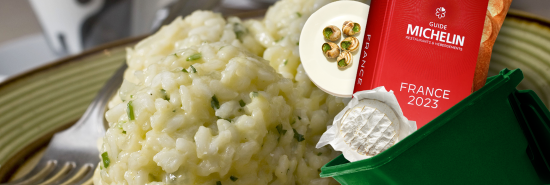
Forget the hype on French cooking, throw away the Michelin Guide, and grab some Italian
Richard Smith
If guidebooks were honest about authentic French experiences in August, they would instruct their readers to go to Portugal or Greece. The typical French activity this time of year is transporting oneself elsewhere.
Though I live in France, having recently married an Italian, I usually find myself in Italy for the yearly exodus. And, hailing from neither of these countries, which are at once similar and totally different, I often find myself comparing the two.
FANI WILLIS BANKROLLS PRIVATE ATTORNEY FOR TRUMP PROSECUTION: ‘CERTAINLY UNORTHODOX’
Both boast beautiful landscapes. Both are treasure troves of history and architectural beauty. Both have attractive languages and proud literary and artistic traditions.
All of this is fine. My concern here is with the thing we all, if we’re honest, care about most when traveling abroad: the food.
It is a subject to which I have devoted great thought and a good deal of field research (for the benefit of readers, of course) over the years. My conclusions are liable to have me deported from my adopted country, but I feel I can hold my silence no longer. They are as follows.
With three caveats, Italian food puts French food to shame. Blow out the candle. Close the book. Finito. Basta. If I had to choose between a random dish in Italy and a random dish in France, I’d say “Prego!” every time.
Before the Francophiles fall off their chairs, allow me to explain my caveats as a sign of my good faith.
The first is the bread, the pastries, the cakes — anything that comes from a bakery. The French baguette a la tradition beats any in the world once price, quality, and availability are factored in. After six years in France, I have come to incorporate bread into just about every meal, and it is something I miss when in Italy, where the “pane” is too thick and hard on the outside, too light and lacking texture on the inside.
The second caveat concerns only the well-heeled among us. I am referring to the French haute cuisine. French cooking at the top end of the scale is second to none, a fact to which the (admittedly French) Michelin Guide attests. French restaurants have approximately 630 Michelin stars in total, more than any other country in the world. Italian restaurants by comparison have just over half that figure.
The techniques developed in leading French kitchens have been influential around the world, particularly in English-speaking countries whose own culinary traditions are comparatively lackluster. Two of Britain’s most influential chefs, Gordon Ramsay and his mentor Marco Pierre White, were both trained in the French cooking tradition.
The third point concerns the cheese. While I prefer mozzarella and pecorino to comte and Camembert, it cannot be denied that French cheese is first-rate. And, as with its cuisine more generally, the more you have to spend, the truer this becomes.
These points are by no means marginal. The question really is: How much money do you have in your pocket? If you have $100 to blow on lunch, Paris is one of the best places in the world to be. If you have $20, I invite you to start talking with your hands.
Ask anyone of ordinary means what their favorite Italian meals are. In most cases they will be able to come up with five to 10. Ask the same person what his or her favorite French dishes are, and I expect they will have a harder time.
Where the Italians have pasta, lasagna, pizza, crostini, arancini, not to mention a huge range of lesser-known meat dishes, the French have a more divisive, to put it delicately, range of meals eaten around dinner tables and at moderately-priced restaurants and bistros. These include tartare (raw mince), boeuf bourguignon (beef stew cooked in red wine), snails (made edible only with copious amounts of butter and garlic), steak frites (usually low-quality steak served with fries), and overpriced and usually underwhelming — wait for it — hamburgers, a dish named for a German city and invented in Connecticut.
Of course, if you are lucky or know where to go, you can eat very well for relatively little in France. Around once a month I dine with a friend at the Bouillon near the Republique in Paris, an institution famous for serving traditional French fare at very reasonable prices. I usually take the pork knuckle with fries for the main and the profiterole for dessert, and am happy at the end of it to pay 20 euros including wine, water, and that world-famous bread. Best of all, the Bouillon takes bookings, without which you can expect to queue outside, sometimes for hours, before you get a table.
Which brings me back to the central point. While French cuisine has much to commend it, if you want to eat well without going through too much trouble or blowing your bank balance, I say: Sorry, Pierre. Pietro does it better.
CLICK HERE TO READ MORE FROM THE WASHINGTON EXAMINER
RJ Smith is an Australian teacher and author of fiction living in Paris.
